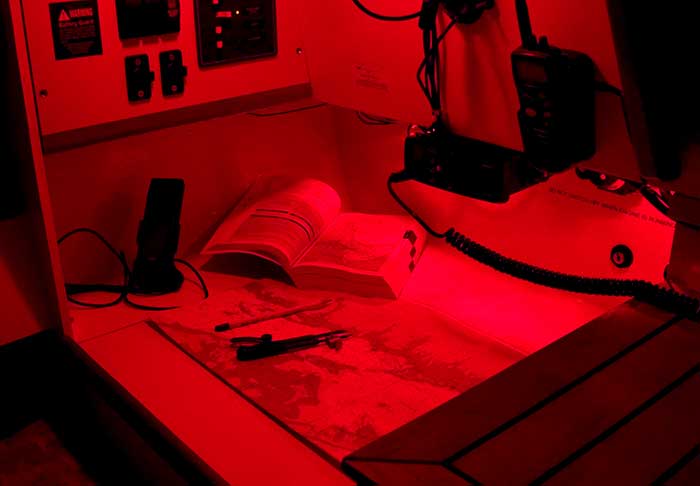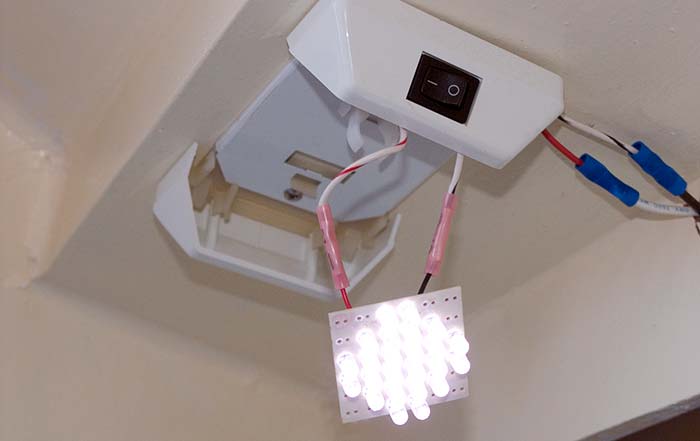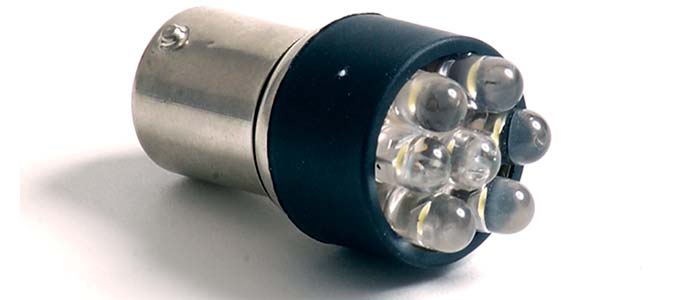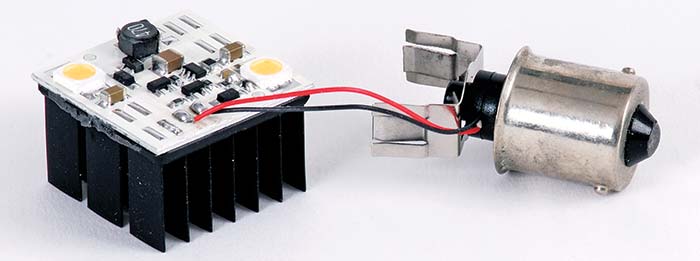Advertisement
Lighting technology has come a long way in the last few years. Now might be the time to consider an upgrade to LEDs.

One of my first projects was to provide nighttime LED lighting for the chart table.
LEDs are nothing new. They're comparatively old technology, and they've been used as indicator lamps on TV sets and electrical panels for many years. Scientists have known that the longevity of the LED "bulb" coupled with it's low power consumption would make it an ideal replacement for conventional incandescent bulbs, if only they could produce an LED that delivered a white light and high enough light output. With recent improvements and innovations, these challenges have been largely overcome, and LEDs are now being routinely changed to by owners or are fitted at the factory by the manufacturer.
Technical Support
Tools & Materials:- Wire Strippers
- Wire Cutters
- Crimpers
- Flashlight
- Screwdrivers
- Digital Multimeter
- Pliers
Cost: If you're just changing a light bulb, expect to pay $4 or $5. Each new complete light fitting could cost up to $50 or more.
LED Pros
- Long life (in excess of 50,000 hours)
- Less electricity
- Much less heat
- Virtually a fit-and-forget item
LED Cons
- Higher initial cost
- May require special light fixtures

Dome-type lights can be easily retrofitted with LED arrays.
One of the things that I noticed when I changed to LED lighting in the main saloon of my boat was that I had to run the air-conditioning far less often to keep the cabin cool. With the AC running less, I could use the generator less often, and this meant a decrease in fuel burnt. There have been other benefits, too. I initially changed the lights to reduce energy consumption, but the robust nature of the LEDs has meant that I haven't had to replace any yet.
Early LED lighting fixtures tended to cause electrical interference, but these issues have largely been resolved; in any event, the amount of interference was less than that caused by most florescent light fixtures.
So Can I Simply Replace My Existing Bulbs With LEDs?
This depends to a large extent on the light fixture. Normally, most reading lamps and those with bayonet-type connectors can be easily exchanged. This is often a good place to start if you're not sure if LEDs are right for you or your boat. I first converted my red and white light over the nav station to LED lighting, then went on from there.
Depending on the light fixture, many bayonet-style bulbs can simply be exchanged for an LED cluster, making this the simplest of all upgrades.
Color Temperature
All light, either artificial or naturally occurring, has what is known as a color temperature. This rather misleading term has nothing to do with how hot a bulb gets but refers to the characteristics of the light that it transmits. Color temperature is measured in Kelvin, with 5,600 K being the temperature (color) of daylight at midday.Any color with a number higher than this appears colder (bluer), while each color with a lower number looks warmer (yellower). Most artificial lights used for reading and other tasks will have a Kelvin rating in the 3,000 to 4,800 range, which represents a good balance between warmth and clarity, and which makes the interior of a cruiser's saloon feel warm and inviting.
Some LED products are labeled with their color temperature. Others are called simply "warm white" because we lay persons think of the yellowish glow of an incandescent light as "warm." Ironically, such LEDs have a color temperature close to that of relatively cool incandescent lights.

The Sensibulb from Sailors Solutions fits neatly into a variety of light fixtures and offer a good spread of light to read by.
